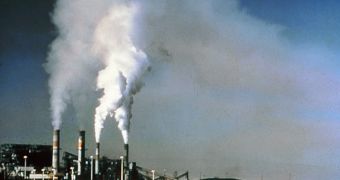Air pollution is a global phenomenon which affects the lives of seven billion people worldwide. After the Environmental Protection Agency faced criticism in 2004, under the Bush administration, for not succeeding in adopting effective solutions to this problem, the organization elaborated a secret list which isn't that private anymore.
According to their study, 464 enterprises act as major polluters all across the US, while refusing to comply with the present legal framework, action which made them appear on the watch list as “chronic violators.”
Their profit margins have been obtained at the environment's expense, taking into consideration that some of these companies didn't bother to obtain a permit that would justify their work.
According to the paper created by EPA, there are 10 types of conduct which would make companies appear on the black list, among which authorities quote the failure to obtain a permit, violation of any air toxics requirements, actions which fail to comply with any local, state or federal order.
Even if their contribution isn't proved, their simple presence on the list might be able to decrease their profit margins, once the great mystery which surrounds this topic will be revealed.
It seems that almost 1,600 power plants put our health in danger, while more than 300 candidates on the list are considered to be "high priority violators," which came into EPA's attention ten years ago.
If the number doesn't draw an alarming picture, EPA's officials also mention the fact that these facilities are responsible for spreading 40% more toxic emissions than they did in 1990. The most affected local communities are located in Oklahoma, Arizona and Iowa.
"It certainly is true that there are places in the country that are overburdened with toxic pollution," affirmed Cynthia Giles, from EPA.
Grant Nakayama, who leaded EPA's investigations during the Bush administration appreciates that some of the major polluters which have been added on the list may not be an actual threat to our wellbeing.
He also declared that the list was meant to be kept secret in order to guarantee the success of the entire mission. If the major companies knew that they were being closely watched, they would invest more in measures of precaution which could only cover up their negative influence upon the environment.
"There are also violators out there that are really interested in gaming the system, beating the system and anything that gives them forewarning I think would not be helpful," concluded Nakayama.

 14 DAY TRIAL //
14 DAY TRIAL //